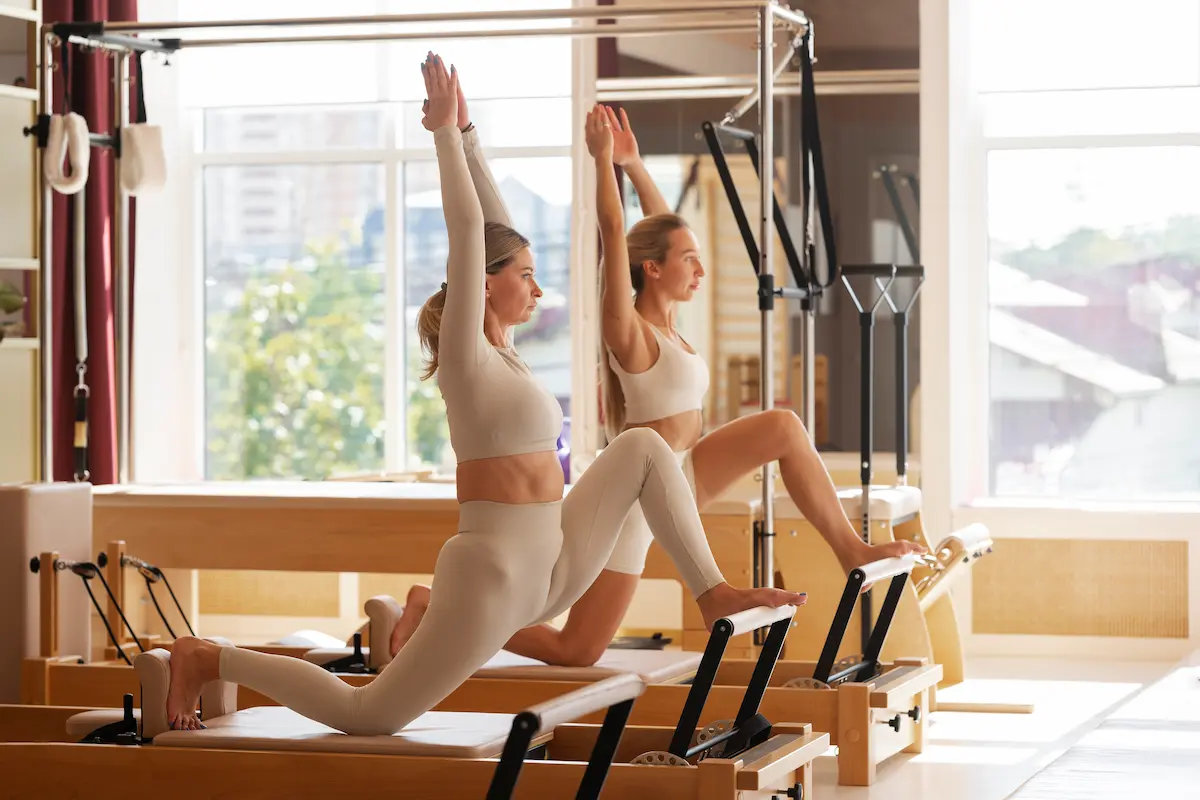When we talk about influential fitness movements, Pilates is undoubtedly a discipline that has a significant impact on people’s lives worldwide.
A low-impact exercise regimen comprising unique movement patterns and focused breathing techniques, Pilates offers numerous health benefits to its practitioners.
But have you ever wondered who invented this fantastic fitness approach? In this article, we’ll delve into the life of Joseph Hubertus Pilates, the mastermind behind the Pilates method, and the fascinating history of the development of this remarkable practice.
Early Life and Inspirations
Born in Mönchengladbach, Germany, in 1883, Joseph Hubertus Pilates battled various illnesses as a child, including asthma, rickets, and rheumatic fever.
These personal encounters with poor health inspired Pilates to dedicate his life to physical fitness to overcome weakness and build a stronger body.
He began studying various disciplines, such as gymnastics, bodybuilding, wrestling, and martial arts, eventually becoming an accomplished athlete in several sports, including diving, skiing, and boxing.
A Career in Fitness Begins
Influenced by both Eastern and Western fitness approaches, Pilates began developing exercises during World War I while working as an orderly at a British internment camp.
Tasked with assisting injured patients, he devised customized exercises that could be performed even while confined to a hospital bed.
Pilates observed that these exercises resulted in improved strength, flexibility, and overall well-being for the patients, and continued to refine his techniques over time.
The Development of the Pilates Method: Mat Exercises and Apparatuses
During the war, Pilates continued designing innovative exercise equipment by utilizing spring-based resistance systems.
His ingenious solutions combined the springs of traditional hospital beds with pulley systems, creating apparatuses that added resistance to the patient’s movements to better engage and strengthen muscles.
This was the early foundation for what would later become the Pilates apparatuses known today, like the Reformer and Cadillac.
After the war, Joseph Pilates emigrated to the United States in 1923, along with his wife Clara. It was during this time that he developed the initial set of mat exercises, which form the basis of the modern-day Pilates practice.
These exercises primarily used bodyweight resistance and were designed to focus on improving the practitioner’s posture, flexibility, coordination, and mental control.
The Birth of the Pilates Studio
Upon arriving in New York City, Joseph and Clara Pilates opened their fitness studio at 939 Eighth Avenue in Manhattan – an establishment that would soon change the face of the fitness industry forever.
The studio quickly gained popularity among various circles, ranging from dancers to socialites, due to its breathable and spacious premises, compared to other crowded gyms of the era.
Pilates aptly named his method “Contrology”, as it required practitioners to assume complete control over their bodies, aligning their breath, movements, and thoughts harmoniously.
His teachings emphasized the importance of full-body integration, alignment, precision, concentration, and centering. In doing so, participants experienced improved posture, balance, strength, flexibility, and stress relief.
Tailoring a Method for the Individual
Joseph Pilates and his wife Clara tailored each session according to their clients’ unique physical requirements and abilities, continually refining both the mat exercises and the specialized equipment to suit individual needs.
Their personalized approach to teaching focused on fostering a deep understanding of biomechanics while challenging the body to reach its full potential – an essential aspect of the Pilates method that is still widely practiced today.
Joseph Pilates’ Continued Legacy
As word of the Pilates method continued to spread, numerous high-profile names found their way into Joseph’s studio.
From acclaimed dancers such as George Balanchine and Martha Graham, who incorporated aspects of Pilates training into their dance instruction, to Hollywood stars seeking to improve their physical well-being, interest in the practice surged, solidifying its rightful place among influential fitness methods.
Despite his passing in 1967 at the age of 83, Joseph Pilates’ passion for health and fitness inspired many individuals to continue practicing and refining the methods he started.
Today, multiple generations of teachers known as “Pilates Elders” continue to impart the inventor’s wisdom, ensuring the original principles and techniques remain intact while modernizing them to suit evolving needs.
A Thriving Global Fitness Phenomenon
In recent years, Pilates has evolved into a thriving global phenomenon, with millions of practitioners worldwide. The growth can primarily be credited to certified instructors committed to preserving Joseph Pilates’ legacy and ensuring new generations continue to reap the incredible benefits of this holistic mind-body wellness approach.
- Mat exercises: Although the foundations of these exercises were established by Joseph Pilates himself, contemporary instructors continuously adapt and refine the movements, keeping them relevant for modern lifestyles and varied fitness goals.
- Apparatuses: The Reformer and other specialized equipment have grown in sophistication over time, providing users with enhanced support and challenge during their workouts. However, the core principles underpinning the equipment usage still stem from Joseph Pilates’ early innovations.
- New branches: Various schools and teaching styles have emerged over the years, each with a unique perspective or emphasis within the broader Pilates framework. These can include different cueing methods, exercise variations, or sequencing patterns tailored to specific populations’ needs.
In conclusion, when considering who invented Pilates, it is essential to acknowledge not only Joseph Hubertus Pilates himself but also the dedicated instructors and practitioners worldwide who continue to develop his method today.
By honoring the inventor’s vision while adapting the discipline to suit changing needs, they ensure that Pilates remains an enduring testament to the power of physical fitness and mental fortitude.

